Nibitashi is a traditional Japanese dish that allows you to savor the natural flavors of ingredients simmered in a seasoned dashi stock. With Eggplant Nibitashi, you can enjoy the taste and smooth texture of eggplant, infused with the essence of Japanese cuisine.
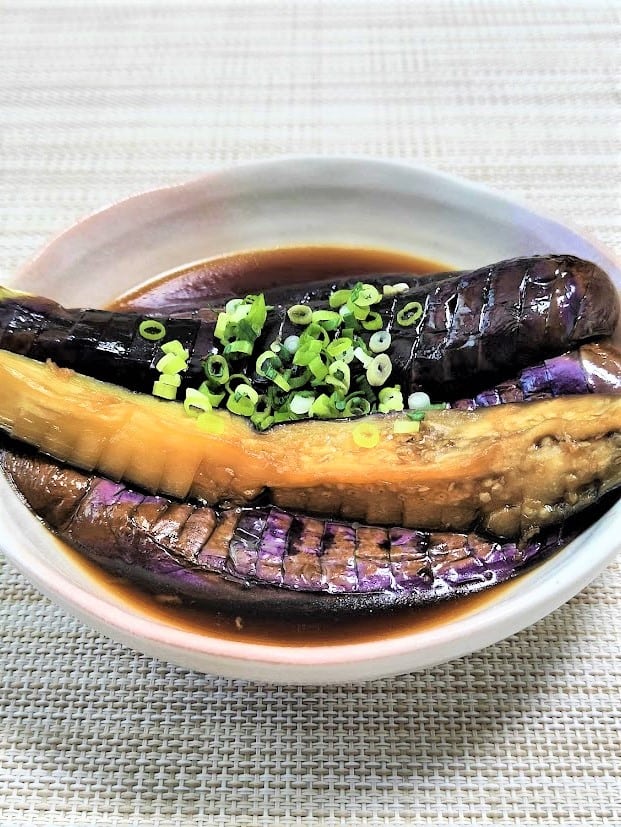
Jump to:
What is Nibitashi?
Nibitashi is a traditional Japanese dish made by briefly simmering ingredients, mostly vegetables, in dashi stock mainly seasoned with mirin and soy sauce. "Ni" comes from the verb "Niru," which means to boil or simmer, and "bitashi" refers to soaking. By keeping the simmering time short, you can retain the texture of the ingredients while allowing the dashi flavor to infuse. In this recipe, I used Japanese eggplant, which readily absorbs the flavors.
This dish can be prepared quickly and easily, making it a suitable choice when you want to add a side dish to your meal. While it is delicious when freshly made, letting it sit for a few hours allows the flavors to develop even more. Whether served warm or chilled, it can be enjoyed delightfully.
Ingredient options
You can use a variety of ingredients for nibitashi. In Japan, eggplant and komatsuna (Japanese mustard spinach) are most commonly used, but many other ingredients can also be used, including zucchini, green bell peppers, asparagus, hakusai (napa cabbage), and broccoli.
Except for ingredients that don't easily absorb flavors, like daikon radish or carrots, almost any ingredient works well. Feel free to experiment with locally available options.
Differences from 'ohitashi,' 'yakibitashi,' and 'agebitashi'
In Japan, there are various dishes similar to nibitashi known as 'ohitashi,' 'yakibitashi,' and 'agebitashi.' Here are the differences:
- Nibitashi: Ingredients are briefly simmered in seasoned dashi.
- Ohitashi: Boiled ingredients are drained and then soaked in seasoned dashi.
- Yakibitashi: Grilled ingredients are soaked in seasoned dashi.
- Agebitashi: Deep-fried ingredients are soaked in seasoned dashi.
While 'nibitashi,' 'yakibitashi,' and 'agebitashi' can be broadly classified as variations of 'ohitashi,' they are generally recognized as separate dishes in Japan due to their distinct cooking methods, as described above.
All of these are traditional Japanese dishes that offer different flavors. Try making them and see how they compare.
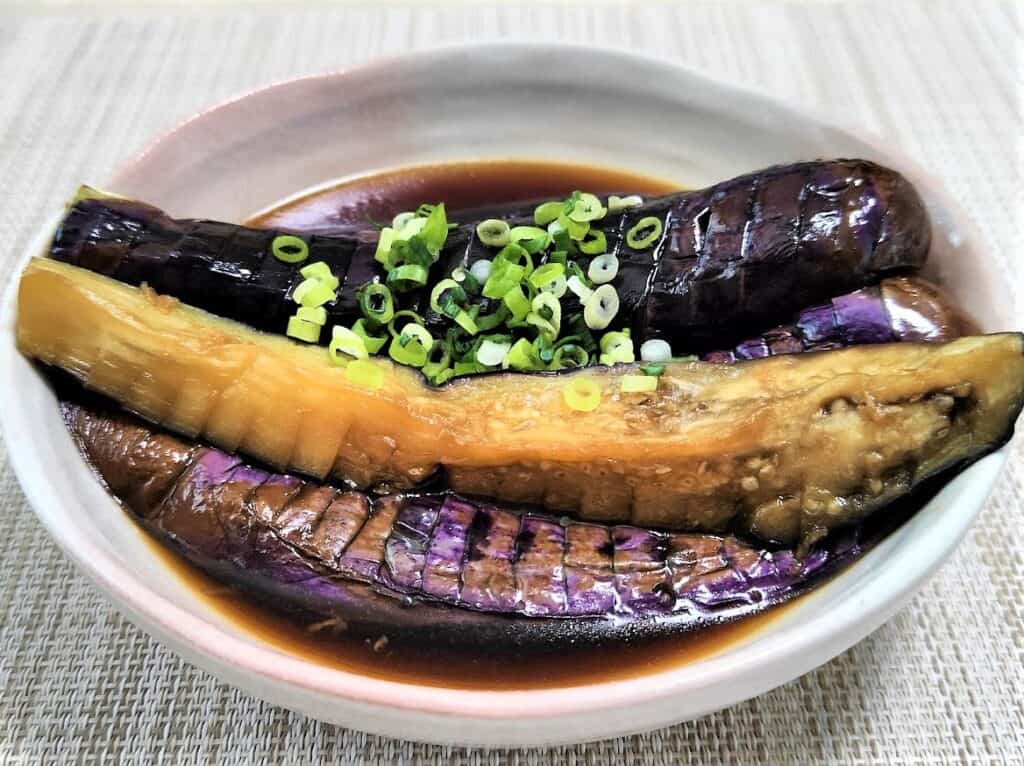
📋Step-by-step recipe
Ingredients
- 2 Japanese or Chinese eggplants
- 1 green onion / scallion
- 0.09 oz ginger
Seasonings:
- ⅖ cup dashi stock (Please refer to the linked page for instructions on how to make it. For plant-based options, see the pages on Kombu Dashi and Shiitake Dashi.)
- 1 ½ Tbsp mirin
- 1 tsp sugar
- 1 ½ Tbsp soy sauce
Instructions
🕒 Total: 15 mins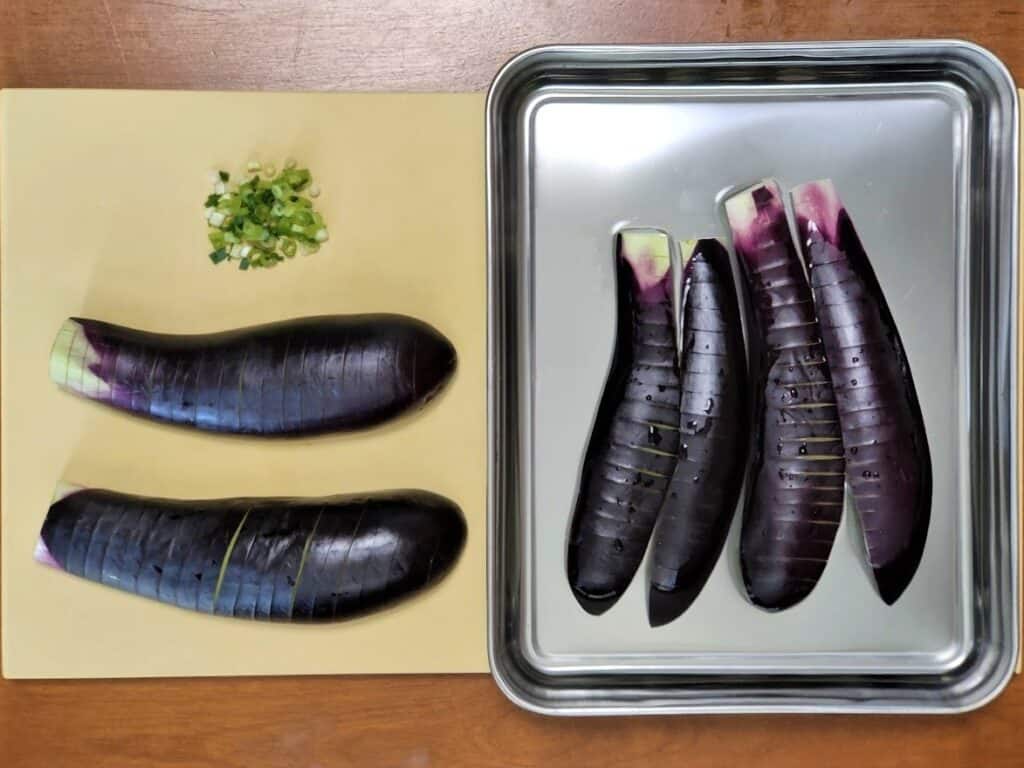
Step 1
Remove the stems from eggplants and cut them in half lengthwise. Make slits in the skins at intervals of ⅕ inch (5 mm), and then cut each half lengthwise once more. Place the sliced eggplants in a bowl of water with the skin side up, and let them soak for at least 5 minutes. Thinly slice green onion.
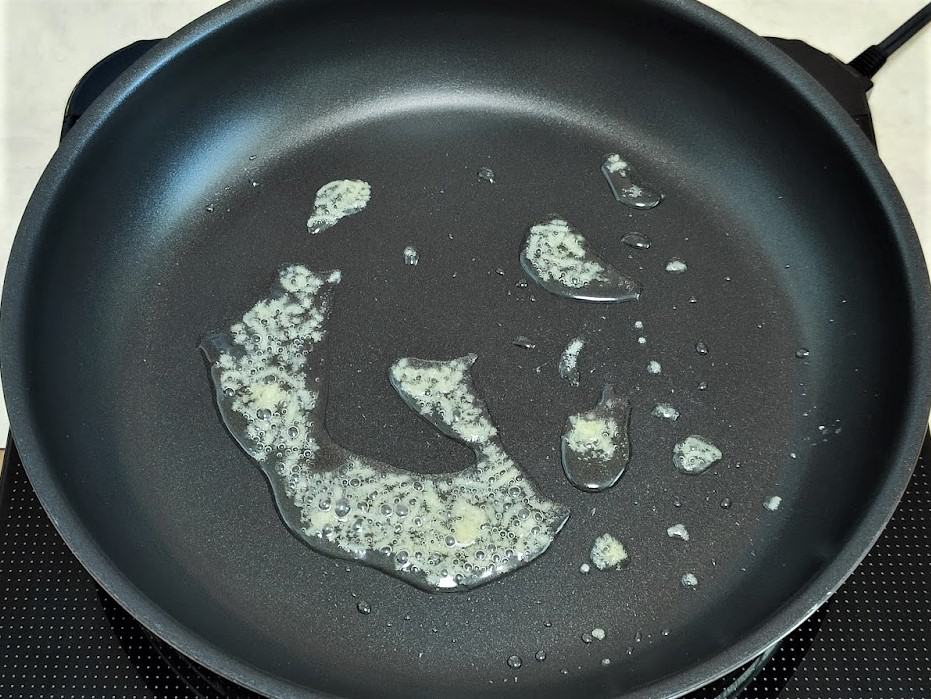
Step 2
Peel and grate ginger. Heat oil in a pan and add the grated ginger. Cook briefly over medium heat until fragrant.
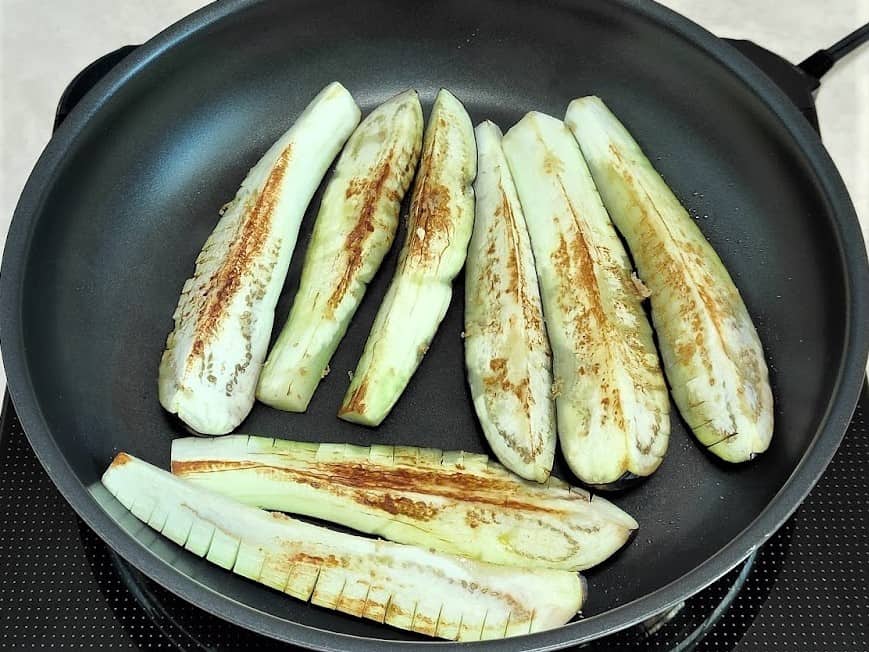
Step 3
Pat the soaked eggplants dry with paper towels, then add them to the pan. Sauté until they are browned on all sides.
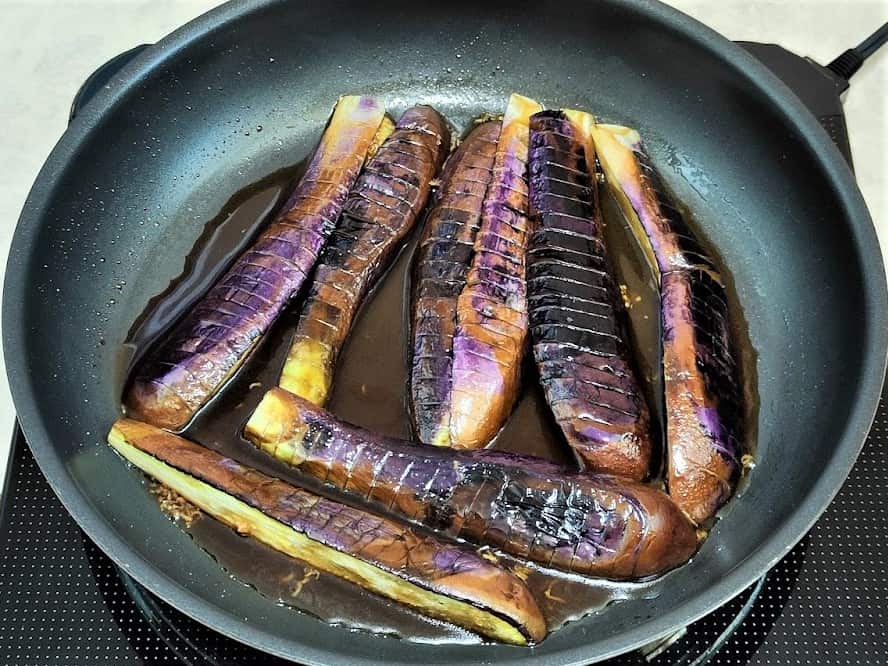
Step 4
Add seasonings (dashi, mirin, sugar, and soy sauce) to the pan and bring to a simmer with the eggplants skin side up. Let them simmer for 3 minutes.
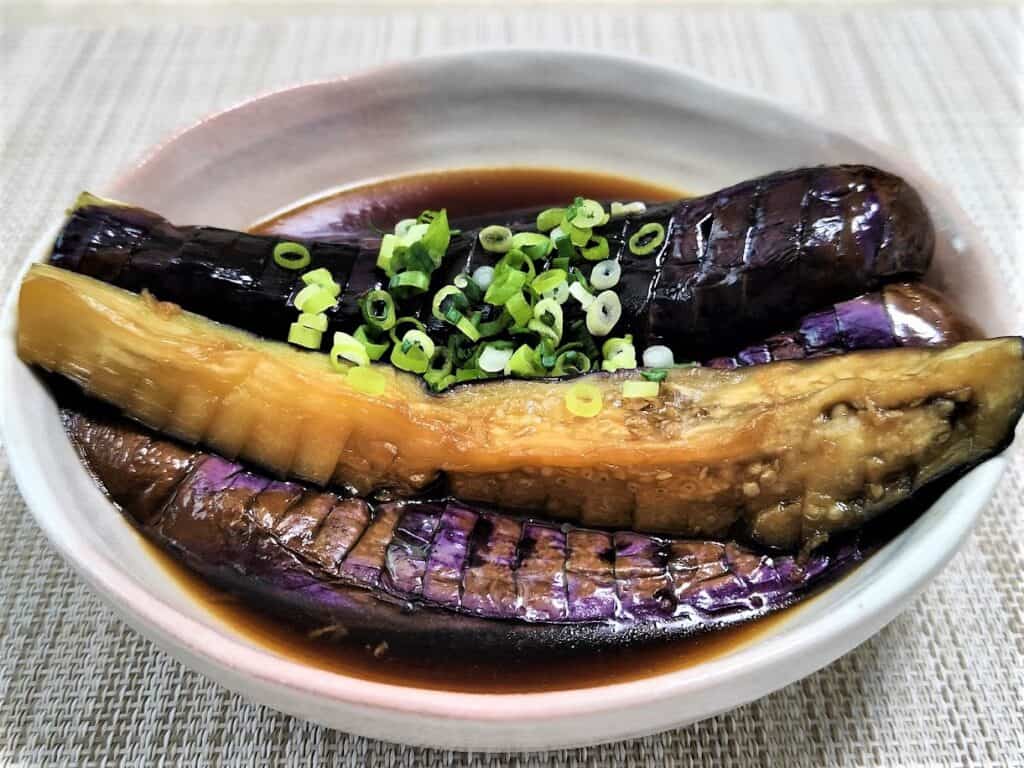
Step 5
Serve the eggplants in bowls with the seasoned liquid and top with the green onions.
It is delicious when freshly made, but it tastes even better after letting it sit for a few hours to allow the flavors to soak in. Feel free to enjoy it according to your preference.
To store
You can store it in the refrigerator for up to 3 days.
Tips on how to make
- Make slits in the eggplants. These slits help the eggplants absorb the flavors. Be careful not to cut too deeply, or the eggplants could fall apart.
- Soak the eggplants in water immediately after cutting them. This helps to remove their bitterness.
- Pat the soaked eggplants dry with paper towels before cooking. If there is still moisture on the eggplants, it might cause oil splatters during cooking.
If you try this recipe, I’d love to hear what you think. Please consider leaving a review and star rating in the comments below. If you enjoyed it, I’d really appreciate it if you shared it with your friends.
Recipe card

Eggplant Nibitashi (Simmered Eggplant in Seasoned Dashi)
Ingredients
- 2 Japanese or Chinese eggplants
- 1 green onion / scallion
- 0.09 oz ginger
Seasonings:
- ⅖ cup dashi stock (Please refer to the linked page for instructions on how to make it. For plant-based options, see the pages on Kombu Dashi and Shiitake Dashi.)
- 1 ½ Tbsp mirin
- 1 tsp sugar
- 1 ½ Tbsp soy sauce
Instructions
- Remove the stems from eggplants and cut them in half lengthwise. Make slits in the skins at intervals of ⅕ inch (5 mm), and then cut each half lengthwise once more. Place the sliced eggplants in a bowl of water with the skin side up, and let them soak for at least 5 minutes. Thinly slice green onion.
- Peel and grate ginger. Heat oil in a pan and add the grated ginger. Cook briefly over medium heat until fragrant.
- Pat the soaked eggplants dry with paper towels, then add them to the pan. Sauté until they are browned on all sides.
- Add seasonings (dashi, mirin, sugar, and soy sauce) to the pan and bring to a simmer with the eggplants skin side up. Let them simmer for 3 minutes.
- Serve the eggplants in bowls with the seasoned liquid and top with the green onions.
Notes
- It is delicious when freshly made, but it tastes even better after letting it sit for a few hours to allow the flavors to soak in. Feel free to enjoy it according to your preference.
- You can store it in the refrigerator for up to 3 days.



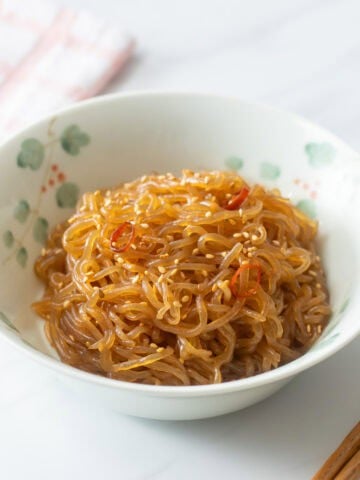
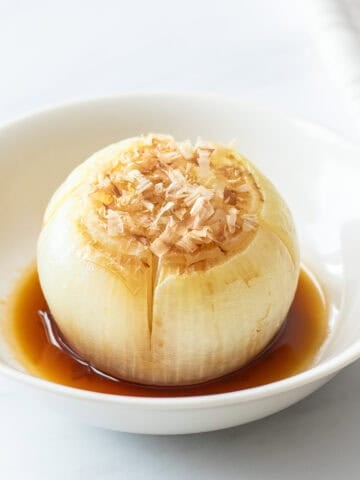
Leave a Rating and a Comment